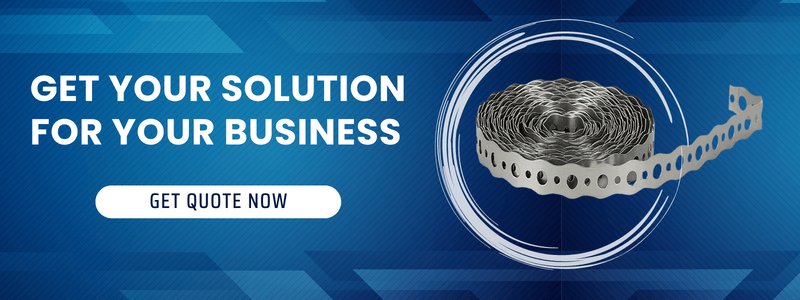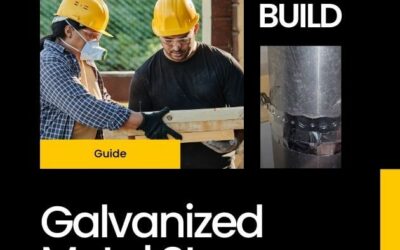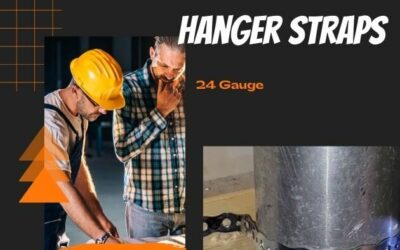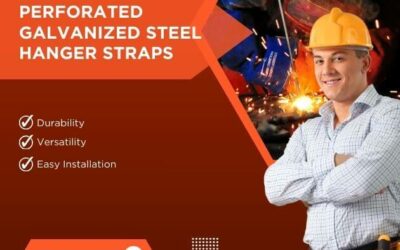Metal strap with holes are an invaluable tool utilized across various industries for their durability, strength, and adaptability. This simple yet ingenious product provides numerous advantages over standard straps or other fastening solutions. In this article, we will explore what exactly metal strap with holes are, their construction and use cases, and their myriad benefits regarding versatility, cost-effectiveness, customization, and beyond. Read on to understand why metal strap with holes should be a staple in every operation.
What are Metal Strap with Holes?
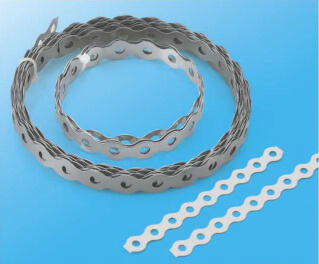
Metal strap with holes, sometimes called perforated or panel straps, are flat strips of malleable metal with a series of punched-out holes running along their length. The holes allow for adjustability and customized fastening solutions. The metal provides unmatched durability to securely bind, tie down or suspend items.
Straps are commonly made from stainless steel, galvanized iron, aluminum, or mild steel. They come in varying lengths and widths, with hole spacing tailored to different applications. Thicker gauges provide greater strength for heavy loads. The combination of adjustable holes and sturdy steel construction makes metal straps a versatile fastener for endless situations.
Common uses include binding bundled items like lumber or piping, securing cargo for shipping and transport, providing adjustable harnesses or tie-downs, attaching components in manufacturing, and much more. Their simplicity, lightweight, and reliability are staples across many industries.
Material and Construction
The metals used to construct perforated straps are chosen for their ideal balance of malleability, corrosion resistance, and tensile strength. Mild carbon steels offer affordable durability. Stainless steel provides incredible strength against rust while still being pliable. Aluminum is light while still maintaining integrity. Galvanized steel has a zinc coating to prevent rusting.
Quality straps utilize metals free of defects, expertly rolled to uniform thicknesses, and punched with clean, evenly spaced holes. This precision ensures smooth edges that won’t catch or tear material used with the straps. The holes must align properly for adjustability and may be reinforced with grommets for extra longevity.
Careful construction provides optimal resilience to stretching, abrasion, impacts, and environmental exposure. Straps can be impervious to moisture, making them suitable for outdoor applications. Proper manufacturing results in products that withstand years of heavy use and loading.
Advantages of Metal Strap with Holes
The practical design of metal straps with adjustable holes has many inherent advantages, making them a remarkably versatile and cost-effective fastening solution.
Strength and Durability
The metal construction of these straps gives them unmatched strength and durability compared to other fastener options. They can sustain significant tension and support substantial weight without the threat of breakage. Even thin gauges can securely bind items, while thick, high-tensile steels can handle enormous loads of several tons.
This robustness allows them to endure impact, abrasion, moisture, and years of reliable use. Their longevity provides excellent value, with a one-time purchase resulting in decades of service.
Adjustability and Versatility
The series of holes punched along the length of the straps allows for adjustable fastening and limitless applications. The holes provide a range of positions to tighten around various-sized items. This adjustability enables a single strap to serve many purposes, binding small bundles or securing massive cargo.
Workers can install custom hole patterns to facilitate specialized uses. Straps can attach to eye hooks, carabiners, turnbuckles or be wrapped around structural elements. This versatility cements metal strap with holes as an essential component across industries.
Grip and Stability
The holes also boost grip and stability when wrapped around objects by reducing slippage. The voids disrupt smooth surfaces to provide friction and traction against materials in the strap. It gives stable, fixed positioning of items without shifting, unraveling, or coming loose. Workers have confidence their fastened loads will hold steady.
Ventilation and Breathability
The perforations allow airflow, which helps dissipate heat and moisture in certain applications. Straps around hot equipment or products like lumber benefit from ventilation to prevent mold or overheating. Workers remain cooler when equipment can breathe. The holes also reduce lightweight straps sticking to sweaty skin in sweltering conditions.
Aesthetic Appeal
The industrial look of metal straps appeals to certain engineering and manufacturing aesthetics. It represents a pragmatic, no-frills approach. The holes add visual interest and textural intrigue. Perforated sheets have decorative purposes beyond functional fastening uses.
Industry-Specific Applications
The versatility of metal straps makes them ubiquitously useful across practically any industry. Some examples of their specific applications include:
Construction
- Binding bundles of lumber, rebar, piping, or other materials for handling and transport around sites
- Securing tarps over equipment, vehicles, and materials
- Providing adjustable tie-downs to truck beds hauling gear
- Hanging scaffolding or implements from structural beams
Manufacturing
- Mounting signs, lights, sinks, and other equipment to walls
- Attaching robotic arm components to frames
- Securing parts for machining, welding, or finishing work
- Suspending conveyor lines, ducting, or electrical conduits
Transportation & Shipping
- Lashing crates, pallets, and cargo to decks of ships and tractor trailers
- Tying down vehicles or heavy equipment for transport
- Securing tarped loads on flatbed trucks and train cars
- Binding stacks of intermodal containers or staging materials
Agriculture
- Attaching trellising wires for crops
- Securing plastic sheeting over greenhouses, nurseries, or livestock areas
- Binding bales of hay for easy handling and storage
- Running adjustable tie-down points on flatbed equipment
The possibilities are endless. Any environment needing dependable, adjustable fastening can benefit from metal strap with holes.
Cost-Effectiveness of Metal Strap with Holes
A major advantage of metal straps is their cost-effectiveness. The simple perforated strip design makes them more inexpensive to manufacture than other adjustable fasteners. This affordability combines with their longevity and versatility to deliver huge value over years of use.
One-time purchase prices are low, especially for thinner gauges. Bulk purchases bring costs down further, with prices as little as a few cents per foot. This economy stretches budget dollars.
Their useful lifespan is practically indefinite with proper maintenance. Reusability and multi-purpose functionality mean a single strap gets utilized continuously. Costs amortize over decades rather than needing frequent replacement.
When considering the costs of alternate solutions like bungee cords, netting, plastic straps, chains, or ratchet systems, metal straps deliver more security and reliability for less upfront investment. Their value is unmatched.
Sustainability and Recycling Benefits
Beyond cost-savings, metal straps provide sustainability advantages. As climate consciousness grows, more companies opt for durable products with recyclable components.
Most metal straps utilize recyclable steel or aluminum. It gives a responsible way to dispose of them after an exceptionally long service life, allowing renewed use of the material. Far better than letting them end up in landfills.
Their durability also reduces consumption and waste. One long-lasting product avoids the constant disposal and re-purchase cycle of limited-life disposable fasteners. Optimizing materials in this way benefits the environment.
Conclusion
Metal strap with holes offer the ultimate solution for reliable, adaptable fastening across limitless applications. Their unparalleled strength secures even massive loads while adjustability facilitates broad use cases. Their simple, economical construction saves money over years of hard-working service. For the strongest, smartest, most sustainable way to bind, tie, or suspend items, metal strap with holes check every box. They are essential for every toolbox, job site, shipping hub, manufacturing floor, agricultural operation, and beyond.
FAQs
Q: What are some other names used for metal strap with holes?
A: They may also be called perforated straps, panel straps, band-it straps, J-hooks, holey straps, or tie-down straps. Various brands have their proprietary names as well.
Q: What sizes and lengths are metal strap with holes available?
A: Common lengths range from 4 feet up to 20 feet. Widths span from 3/4 inch to 2 inches generally. Thicknesses range from light 16 gauge to extra heavy 7 gauge. There are standardized sizing charts from manufacturers.
Q: Can you recommend specific grades of steel best suited for metal strap?
A: Low-carbon steel alloys work well for good strength and corrosion resistance at low cost, like 1018 or 1008 steel. Look to alloy steels like 4130 or 8620 steel for extreme strength but a higher price. Choose galvanized steel for highly wet/humid environments.
Q: What is the best way to cut metal strap with holes?
A: Using a power tool like an angle grinder
Secure Your Pipes with Galvanized Metal Straps: A Comprehensive Guide
Ensuring Pipe Stability and Longevity In the world of construction and plumbing, maintaining the structural integrity of piping systems is paramount. Galvanized metal pipe straps emerge as the unsung heroes, providing unwavering support and security to these vital...
Mastering 24 Gauge Galvanized Pipe Hanger Straps: A Useful Guide
In the realm of plumbing and construction, where every detail matters, securing pipes effectively is paramount. Enter the 24 gauge galvanized pipe hanger strap – a reliable and versatile solution trusted by both professionals and DIY enthusiasts alike. Understanding...
Perforated Metal Hanger Straps: Installation, Benefits, and Maintenance
Are you tired of dealing with sagging ductwork or unsupported pipes in your home or commercial building? Proper support is crucial for maintaining the integrity and efficiency of your HVAC and plumbing systems. That's where perforated metal hanger straps come into...

Justin Wong
Hi, I’m Justin, the technical engineer of Jiangmen Masters. We’ve been running a factory in China that makes metal hanger strap for 16 years now, and the purpose of this article is to share the knowledge related to metal hanger strap from a Chinese supplier’s perspective.

